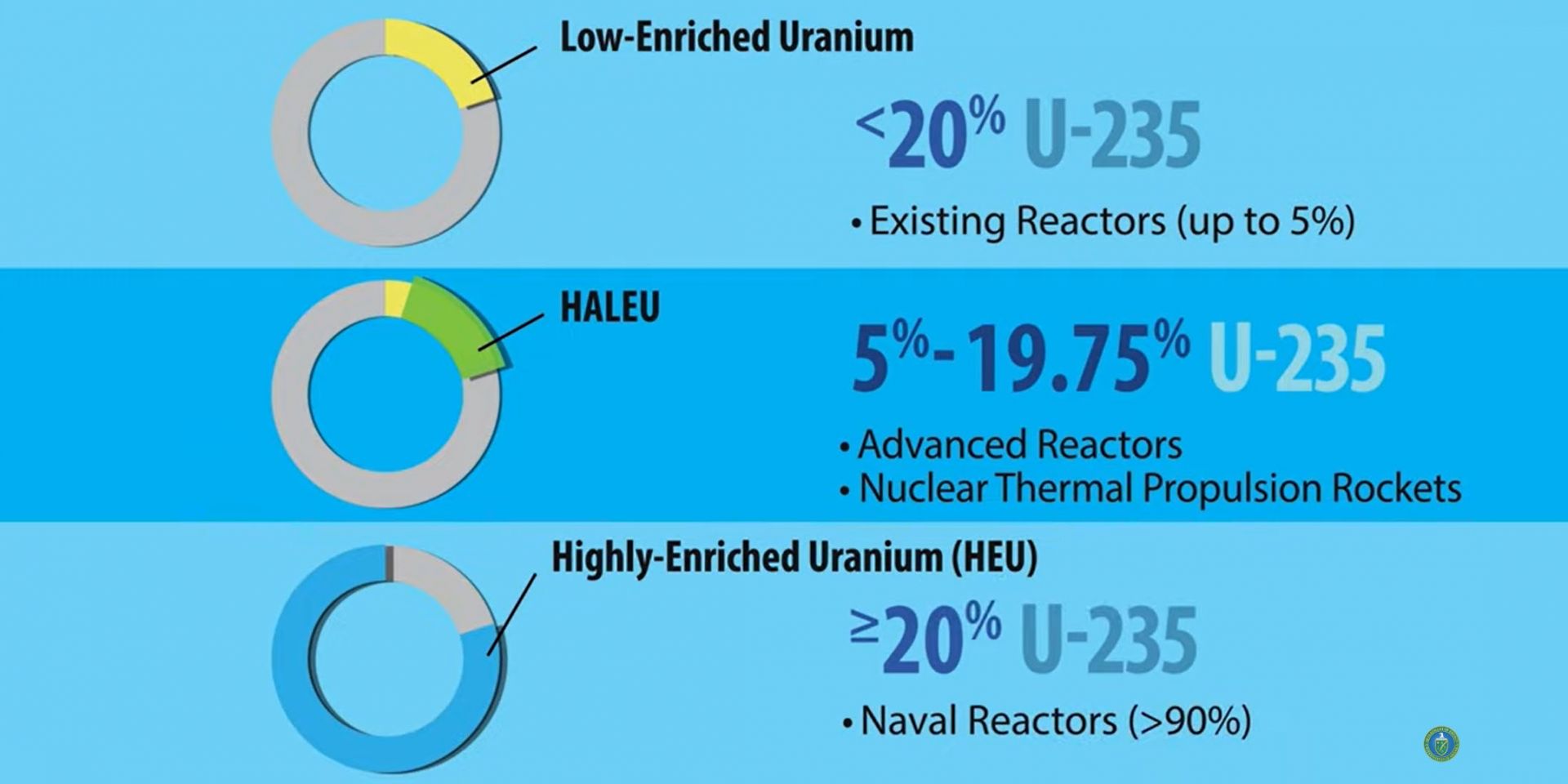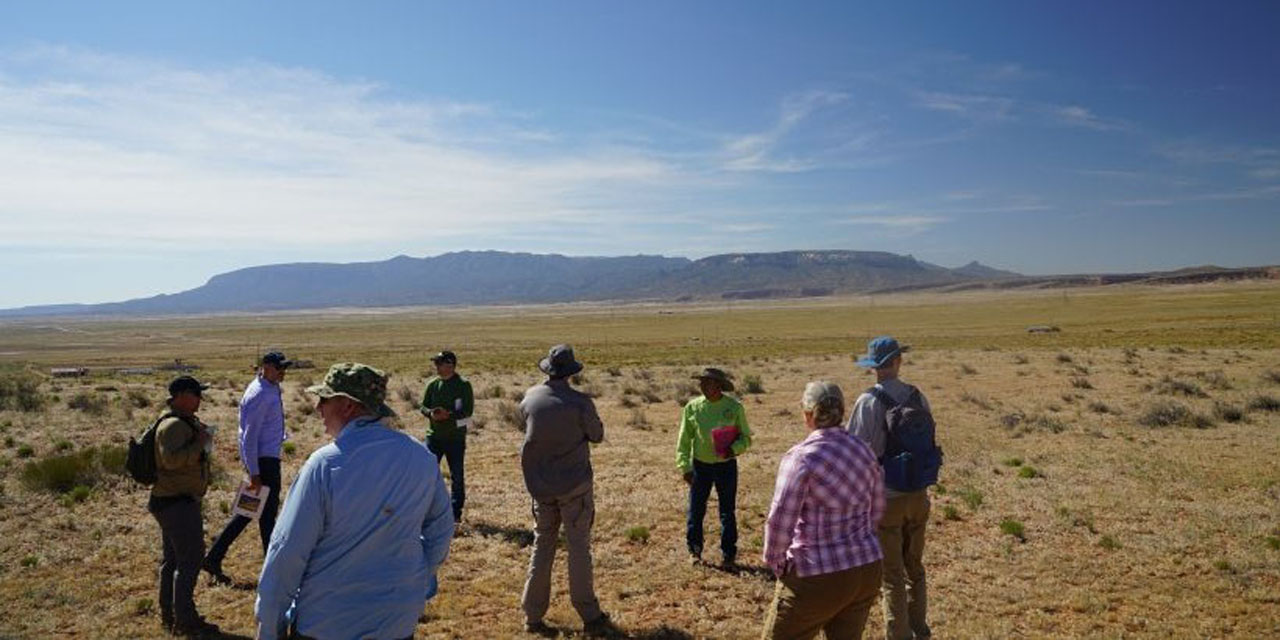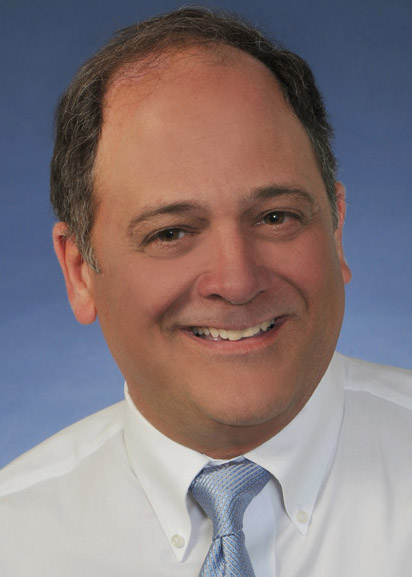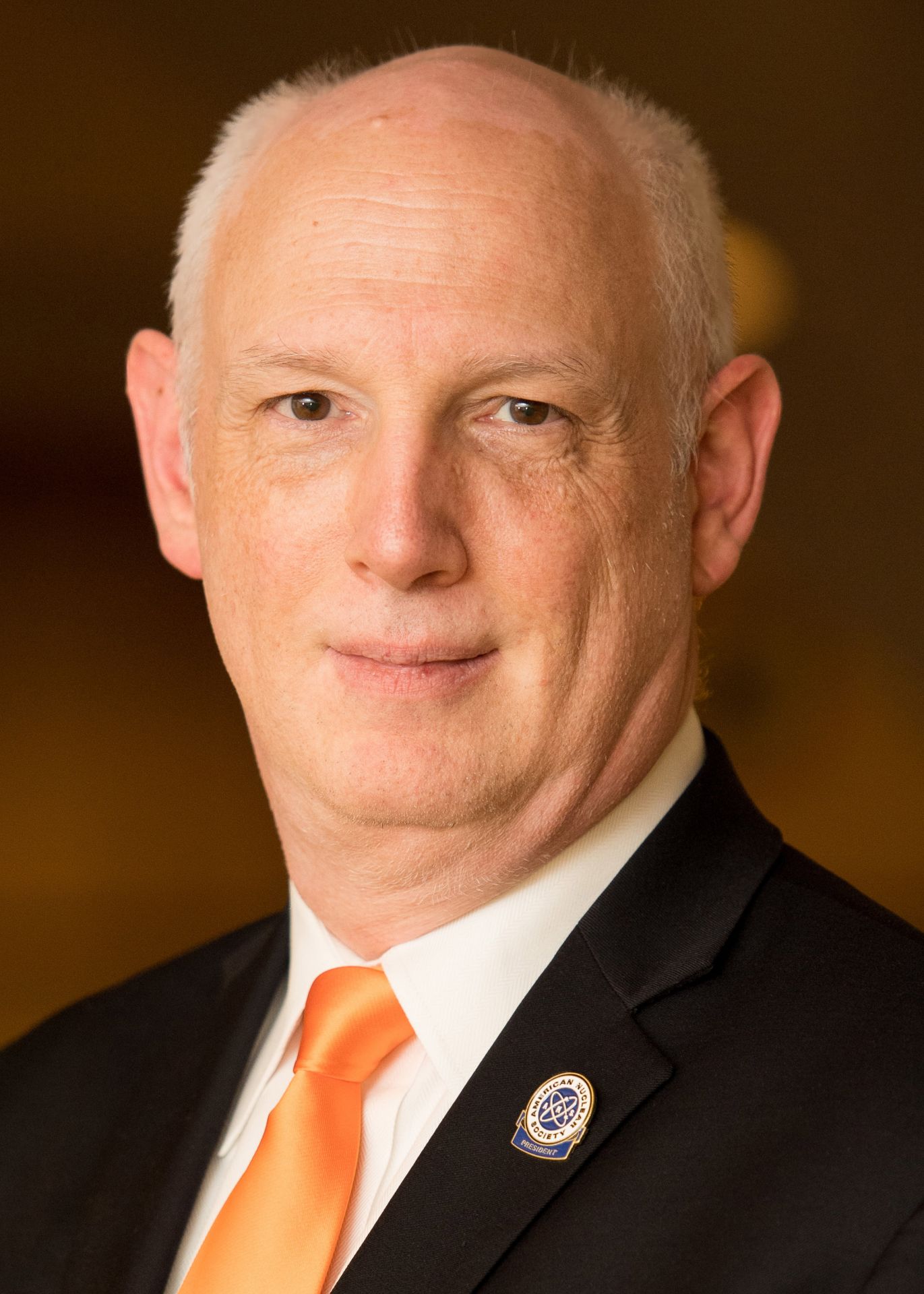Caption: From top left: Stewart, Rampal, Peterson, Bernstein, and Souza participate in the ANS YMG’s “Nuclear Entrepreneurship” webinar.
This year, Nuclear Science Week was October 17–21, and the ANS Young Members Group celebrated by hosting the virtual event “Nuclear Entrepreneurship” on October 18. Panelists were Per Peterson, cofounder and chief nuclear officer of Kairos Power; Robbie Stewart, cofounder of Boston Atomics; Kelsey Souza, chief operating officer of Ultra Safe Nuclear; and Tyler Bernstein, chief executive officer of Zeno Power. The event was moderated by Brett Rampal, director of nuclear and power strategy at Veriten and chief technical analyst at Segra Capital Management.
Kris Singh (left), president and CEO of Holtec International, and Young-Joon Yoon, president and CEO of Hyundai E&C. (Photo: Holtec International)
Holtec International and Hyundai Engineering & Construction (a Hyundai Motor Group subsidiary) have signed an accord to accelerate the completion of Holtec’s SMR-160 small modular reactor development program, as well as to collaborate on diverse clean energy technologies.
A rendering of the SHINE medical isotope production facility planned for construction in Veendam, the Netherlands. (Image: SHINE)
SHINE Europe, a subsidiary of Wisconsin-based SHINE Technologies, will work with the Netherlands’ University Medical Center Groningen (UMCG) and Delft University of Technology (TU Delft) to produce a variety of terbium isotopes for use in nuclear medicine under a grant proposal approved by the Dutch government on October 17.
The decommissioning of ORNL’s aging research reactors is clearing the stage for future missions at the site.
An aerial photograph of Oak Ridge National Laboratory’s “Reactor Hill,” with, from left to right, reactor buildings 3042, 3005, and 3010. The DOE and its contractors are removing these excess contaminated facilities to eliminate risks and clear land for future research missions. (Photos: UCOR)
The Department of Energy and its environmental cleanup contractor United Cleanup Oak Ridge (UCOR) are poised to meet critical milestones as they continue to move to the next generation of cleanup at Oak Ridge National Laboratory in Tennessee. On ORNL’s main campus, crews on “Reactor Hill”—so named because of the four remaining reactor facilities on that hillside—and at the Experimental Gas-Cooled Reactor (EGCR) just east of the campus continue rigorous schedules as they enter a new phase of progress in the cleanup program.
A view of the Savannah River Site’s H Area. (Photo: DOE)
The Department of Energy’s Office of Environmental Management (EM) announced on October 18 that it has begun the process of transferring primary authority of South Carolina’s Savannah River Site (SRS) to the National Nuclear Security Administration, with the transfer expected to be completed in 2025.
An image from the video “What is High-Assay Low-Enriched Uranium (HALEU)?” released by the DOE in April 2020. (Source: DOE)
Another piece of the plan for meeting the urgent need for high-assay low-enriched uranium (HALEU) to fuel advanced reactor deployments fell into place when the Department of Energy held an Industry Day on October 14. Attendees were asked how soon they could deliver 25 metric tons per year of HALEU enriched in the United States from newly mined uranium. Offtake contracts for six or more years of HALEU production at that rate could be used to stock a DOE-owned HALEU bank to “support [HALEU] availability for civilian domestic research, development, demonstration, and commercial use.”
The Integrated Effects Test at TerraPower’s laboratory in Everett, Wash. (Photo: Southern Company/TerraPower)
“The world's largest chloride salt system developed by the nuclear sector” is now ready for operation in TerraPower’s Everett, Wash., laboratories. Southern Company, which is working with TerraPower through its subsidiary Southern Company Services to develop molten chloride reactor technology, announced on October 18 that the Integrated Effects Test (IET) was complete. The multiloop, nonnuclear test infrastructure follows years of separate effects testing using isolated test loops, and it was built to support the operation of the Molten Chloride Reactor Experiment (MCRE) at Idaho National Laboratory that the companies expect will, in turn, support a demonstration-scale Molten Chloride Fast Reactor (MCFR).
The Neckarwestheim nuclear power plant in Germany. (Photo: EnBW)
German chancellor Olaf Scholz has provided what appears to be the final word on the fate of his country’s three remaining operating nuclear power plants.
Via an October 17 letter, Scholz informed economy and energy minister Robert Habeck, environment minister Steffi Lemke, and finance minister Christian Lindner of his decision to keep all three facilities operating “beyond 31 December 2022 until 15 April 2023 at the latest.” The order ends months of argument between Scholz’s two coalition partners—the stridently antinuclear Greens and the center-right Free Democrats (FDP)—regarding the plants’ continued operation. (Habeck and Lemke are Green Party members, while Lindner is with the FDP.)
Workers dismantle the conveyors of a coal-handling system at the Savannah River Site’s D Area. (Photo: SRNS)
Workers at the Department of Energy’s Savannah River Site have achieved an 85 percent reduction in the site’s operational footprint, a percentage that will grow as decommissioning and demolition of facilities continue in the site’s massive D Area, according to the DOE.
DRUM program members and others visit mine sites in the Navajo Nation during the spring of 2022. (Photo: DOE-LM)
The Department of Energy’ Office of Legacy Management (LM) will be conducting verification and validation work at abandoned uranium mines in the Navajo Nation of northeastern Arizona during the fall field season, which runs from mid-October to mid-December.
Then energy secretary Bill Richardson decided to permanently shut down the HFBR in November 1999. (Photo: DOE)
“Why did a tiny leak bring down a hugely successful research reactor 25 years ago?”
That’s how Robert P. Crease, an academic who writes a regular column for Physics World, introduces The Leak: Politics, Activists, and Loss of Trust at Brookhaven National Laboratory, a book he wrote with former interim BNL director Peter D. Bond that was published this month by MIT Press.
“Were this story fiction, its characters, plot twists and ironies would be entertaining,” Crease writes in his October 5 Physics World post about the book. “But because it’s fact, it’s a tragicomedy.”
Virginia Gov. Glenn Youngkin announces a $10 million energy innovation investment in Virginia. (Photo: Christian Martinez/Office of the Governor)
Some two weeks after unveiling his state’s 2022 Energy Plan, Virginia Gov. Glenn Youngkin has announced his intention to include $10 million in the state’s next budget proposal—due in December—to create the Virginia Power Innovation Fund for research and development of nuclear, hydrogen, carbon capture and utilization, and battery storage technologies.




















